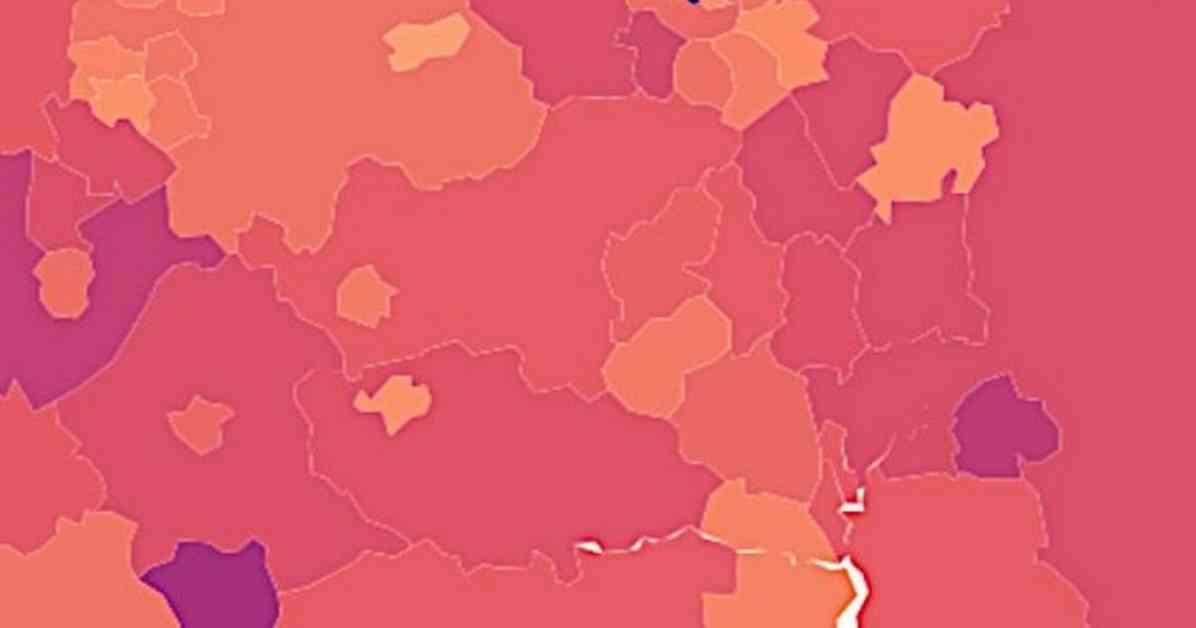Government Report Highlights Disparities in GCSE Results Across England
As students across the UK eagerly await their GCSE results, a recent government report has shed light on the stark regional variations in pass rates. The impact of the Covid-19 pandemic on exam results, as well as changes in the approach to grading, have played a significant role in shaping these outcomes.
London Dominates the Top Rankings
According to the Explore Education Statistics study, the top three locations for the highest GCSE pass rates are all based in London. With almost 70% of students achieving a grade 5 or above, the capital city has proven to be a powerhouse when it comes to academic success.
The London Borough of Sutton emerges as the frontrunner in terms of GCSE performance, boasting an impressive pass rate of 69%. This is followed closely by Kingston upon Thames, where 66.7% of students achieved a grade 5 or above in English and Maths. The London Borough of Barnet rounds out the top three with a pass rate of 66%.
Outside of London, only three other areas managed to secure a spot in the top 10 rankings. This disparity in performance highlights the significant educational divide that exists across different regions in England.
Knowsley Ranks as the Worst-Performing Area
On the other end of the spectrum, the borough of Knowsley in Merseyside has been identified as the worst-performing area in the UK. With a pass rate of just 19.52%, Knowsley stands out as the most likely area for students to fail their GCSEs.
Data from the previous academic year showed that Knowsley had achieved a similarly poor pass rate of 26%. Despite efforts to improve educational outcomes, the latest figures indicate a further decline in performance, with Knowsley now falling below the national average of approximately 45%.
The stark difference between the highest and lowest-performing areas underscores the deep-rooted educational inequalities that persist in the UK. The impact of socio-economic factors, such as household income disparities, cannot be overlooked when considering the disparities in academic achievement.
Socio-Economic Factors at Play
An analysis of gross disposable household income per head reveals a significant disparity between regions with high and low GCSE pass rates. In London, the average disposable income per head stands at £31,094, significantly higher than the national average of £21,679.
This disparity in income levels translates into differences in access to resources and opportunities for students. Parents in affluent areas like London are more likely to enroll their children in extra-curricular activities, hire tutors, and invest in additional educational support. In contrast, families with lower disposable incomes may struggle to afford such resources, placing their children at a disadvantage.
Knowsley, with an average disposable income of £17,262 per head, lags behind the national average. In comparison, the London Borough of Sutton boasts an average disposable income of £24,426 per head, highlighting the significant income gap between these two regions.
The Role of the Covid-19 Pandemic
The government report also points to the impact of the Covid-19 pandemic on exam results and changes in the approach to grading. The disruption caused by the pandemic has undoubtedly had a profound impact on students’ academic performance and outcomes.
In 2022, outcomes were compared to 2019, the last year before the pandemic, to assess the impact of Covid-19 on GCSE results. With a return to pre-pandemic grading and some protective measures in place, the 2022 results reflected a midpoint between the pre-pandemic year and the pandemic-affected year of 2021.
Cllr David Lonergan, cabinet member for children’s services in Knowsley, emphasizes the need to contextualize the figures in light of the challenges posed by the pandemic. He highlights the slight increase in the number of students achieving a ‘good’ pass in both maths and English, as well as an improvement in those achieving a ‘strong’ pass in these subjects.
Addressing Educational Disparities in Knowsley
Despite the challenges faced by Knowsley in improving GCSE results, efforts are being made to raise educational standards in the area. While the Council does not directly manage the secondary schools in Knowsley, collaboration with academies and other educational institutions is essential in ensuring that students receive a quality education.
The disparities in educational outcomes in Knowsley underscore the need for targeted interventions and support to address the underlying factors contributing to poor performance. Initiatives that focus on improving access to resources, providing additional educational support, and addressing socio-economic inequalities are crucial in narrowing the educational gap in the region.
Moving Forward: A Call for Action
As the disparities in GCSE results across different regions in England continue to be highlighted, it is evident that a concerted effort is needed to address the underlying issues that contribute to educational inequalities. While the impact of the Covid-19 pandemic has exacerbated existing challenges, it has also underscored the importance of addressing these disparities and ensuring that all students have equal opportunities to succeed.
By focusing on targeted interventions, support for students from disadvantaged backgrounds, and collaboration between educational institutions and local authorities, progress can be made in narrowing the educational gap and improving outcomes for all students. It is essential that policymakers, educators, and stakeholders work together to create a more equitable and inclusive education system that empowers students to reach their full potential.























